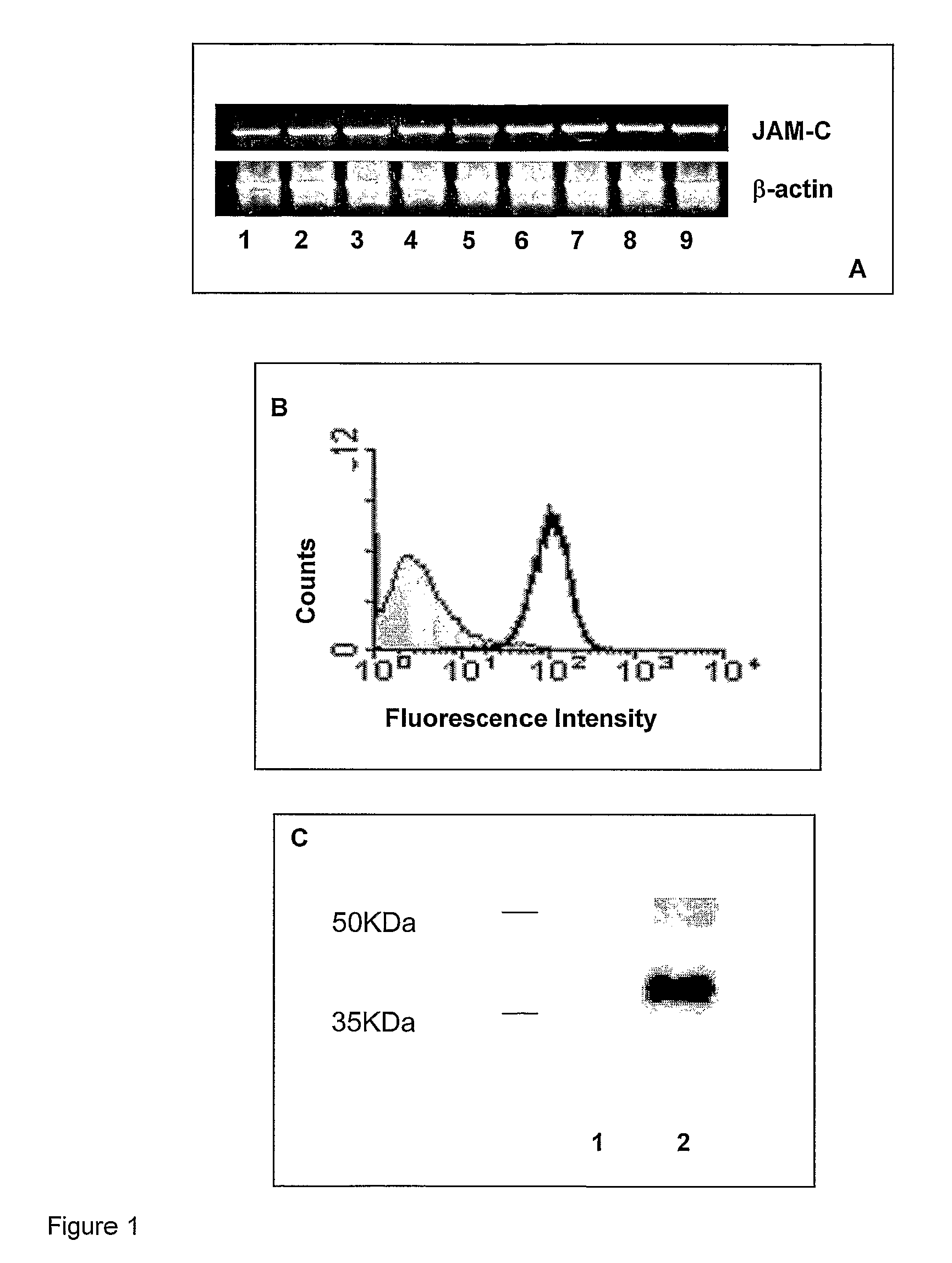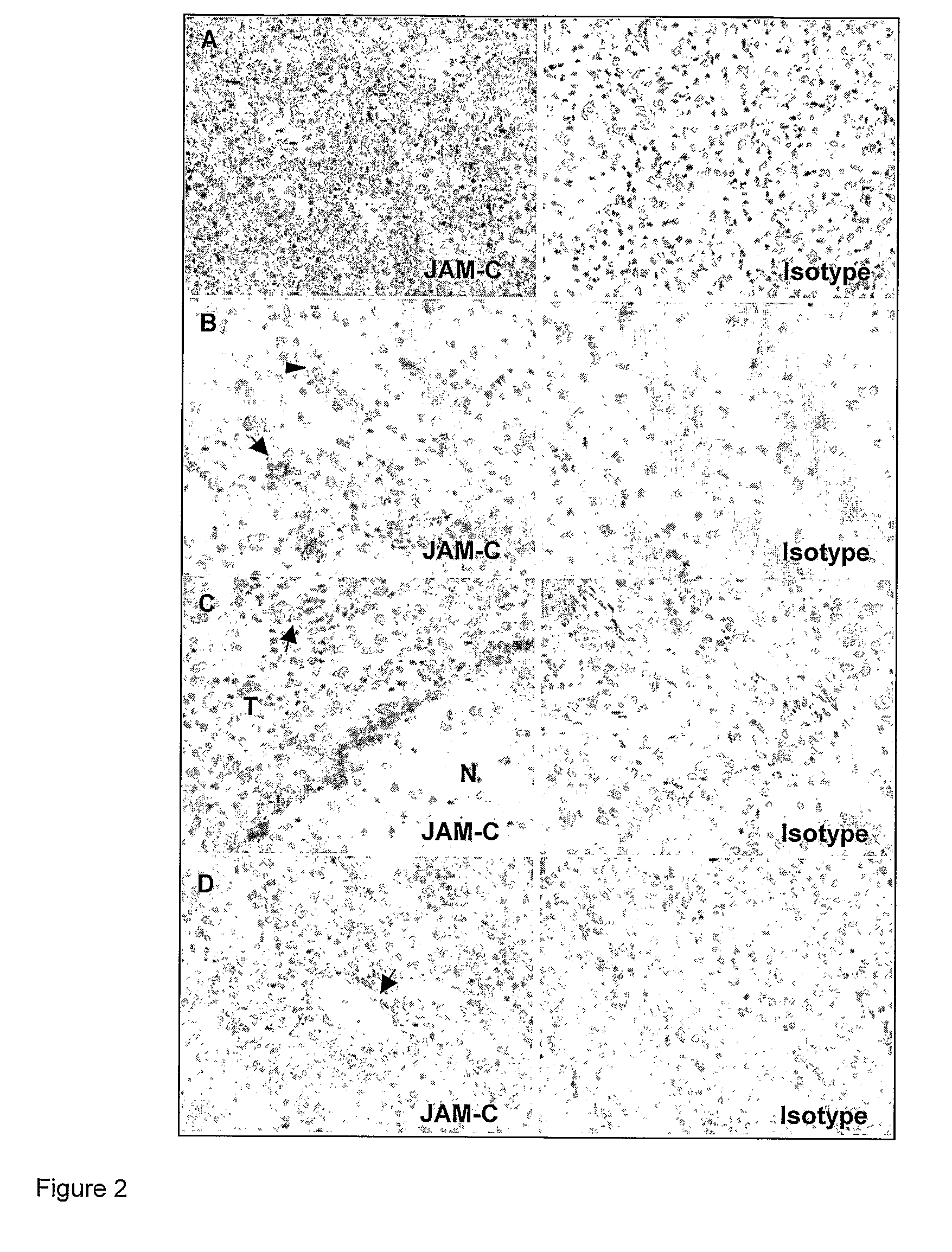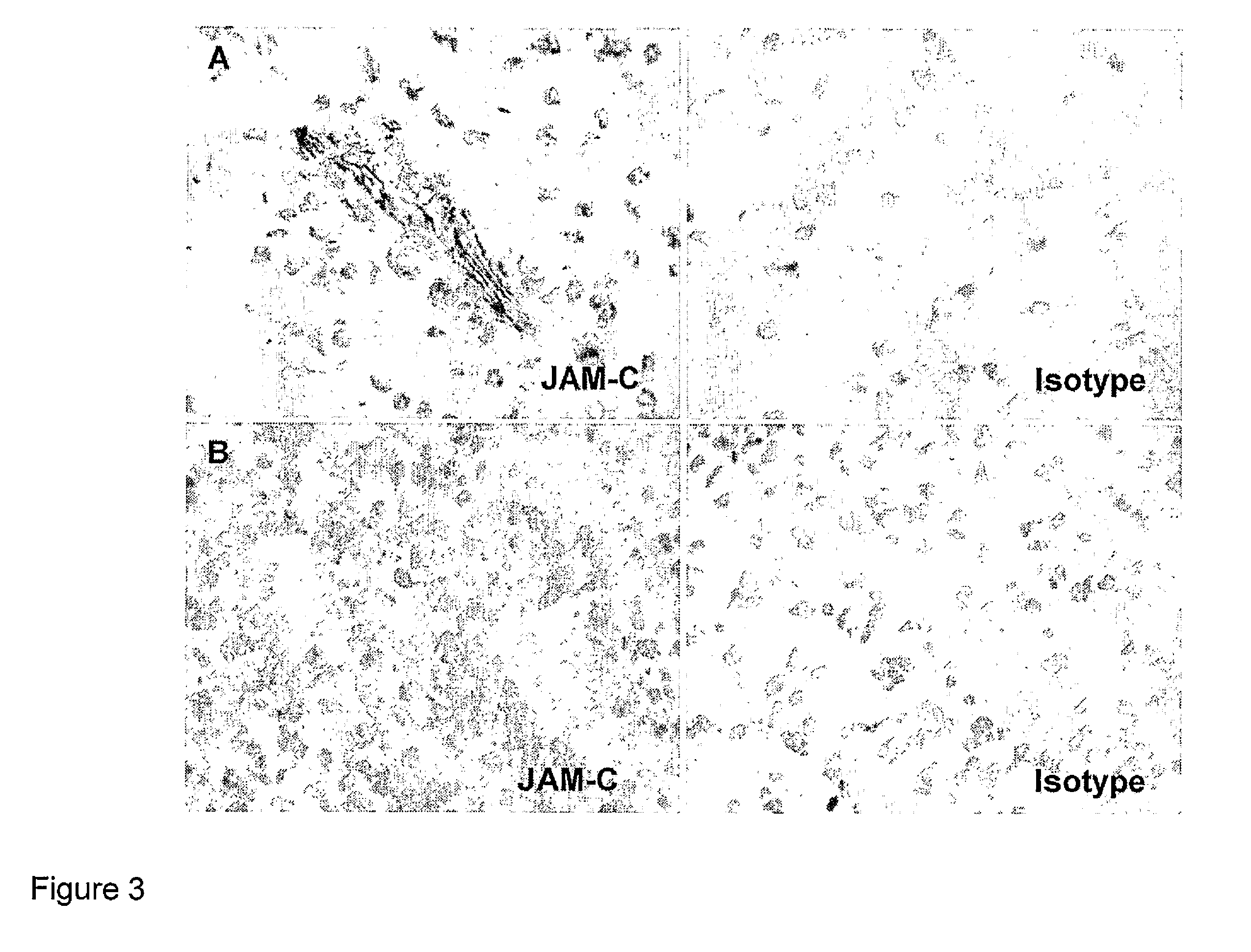Junctional adhesion molecule-C (JAM-C) binding compounds and methods of their use
a binding compound and junctional adhesion molecule technology, applied in the field of cancer treatment, can solve the problems of inability to sustain all the malignant activity of cells, inability to detect and treat patients affected by these diseases, and often lethal so-called benign forms, etc., to achieve the effect of inhibiting increasing the spread of gliomas, and no negative side effects
- Summary
- Abstract
- Description
- Claims
- Application Information
AI Technical Summary
Benefits of technology
Problems solved by technology
Method used
Image
Examples
example 1
JAM-C and JAM-B Expression in Human Gliomas
Results
JAM-C
[0209]By RT-PCR analysis, we first observed JAM-C mRNA expression in a series of human astrocytoma / glioma cell lines of different malignant grade (FIG. 1 A). All glioma cell lines analysed did express JAM-C mRNA. The expression of JAM-C protein by tumour cells was then confirmed by flow cytometry analysis (FACS) and immunoprecipitation of selected glioma cell lines (FIGS. 1 B and C).
[0210]Then JAM-C expression was assessed by immunohistochemistry on a series of human astrocytomas / gliomas of different grade of malignancy (N=21) (FIG. 2). JAM-C expression, as expected, was detected in all tumour blood vessels (FIGS. 2 B and D) with high levels at points of endothelial cell contacts, a pattern that corresponded to previous descriptions of JAM-C localisation at sites of inter-endothelial cell junctions. In addition, JAM-C was found to be expressed also by glioma tumour cells. JAM-C expression on astrocytomas was heterogeneous, with ...
example 2
JAM-C and JAM-B Expression in GL261 Mouse Glioma
Results
JAM-C
[0220]To investigate the role of JAM-C and possibly JAM-B in gliomagenesis and progression, we selected the GL261 mouse model of human glioma. GL261 cells were originally derived from a tumour induced by intra-cerebral injection of 3-methylcholantrane in syngeneic C57BL / 6 mice (Ausman et al., 1970). GL261 cells recapitulate the major features of human glioblastoma, since we could observe not only a very high proliferation rate, invasiveness in the normal brain tissues, and heterogeneous expression of the astrocyte marker GFAP (FIG. 8 A), but also the characteristic histopathological features of human glioblastomas: prominent vascularisation and necrosis (FIGS. 8 B, C, D, and E).
[0221]We first analysed JAM-C expression on GL261 mouse glioma cells by FACS analysis and immunoprecipitation. JAM-C protein was highly expressed at the surface of GL261 mouse glioma cells (FIGS. 9 A and B). Furthermore, when GL261 cells were stereot...
example 3
Anti-JAM-C Antibody has Minor Inhibitory Effect on Heterotopic Glioma Growth and Angiogenesis
[0227]To investigate the relevance of JAM-C expression for GL261 glioma development in vivo, we first injected GL261 cells subcutaneously into C57BL / 6 syngeneic mice and treated them with intra-peritoneal injections of anti-JAM-C blocking D33 antibody, isotype control 9B5 antibody, or PBS.
Results
[0228]Treatment of the mice with D33 anti-JAM-C antibody moderately reduced subcutaneous tumour growth overtime (FIG. 13 A) as compared to isotype control 9B5 antibody or PBS. This resulted in reduced tumour weights at sacrifice in mice that received anti-JAM-C D33 antibody treatment compared to isotype control 9B5 antibody or PBS treatments (FIG. 13 B). Since another monoclonal anti-JAM-C antibody (H33) was recently shown to reduce in vivo angiogenesis associated with a mouse Lewis Lung Carcinoma (Lamagna et al., 2005a), we thought to analyse whether a similar effect was responsible for the observed...
PUM
| Property | Measurement | Unit |
|---|---|---|
| median survival time | aaaaa | aaaaa |
| time | aaaaa | aaaaa |
| flow rate | aaaaa | aaaaa |
Abstract
Description
Claims
Application Information
 Login to View More
Login to View More - R&D
- Intellectual Property
- Life Sciences
- Materials
- Tech Scout
- Unparalleled Data Quality
- Higher Quality Content
- 60% Fewer Hallucinations
Browse by: Latest US Patents, China's latest patents, Technical Efficacy Thesaurus, Application Domain, Technology Topic, Popular Technical Reports.
© 2025 PatSnap. All rights reserved.Legal|Privacy policy|Modern Slavery Act Transparency Statement|Sitemap|About US| Contact US: help@patsnap.com



